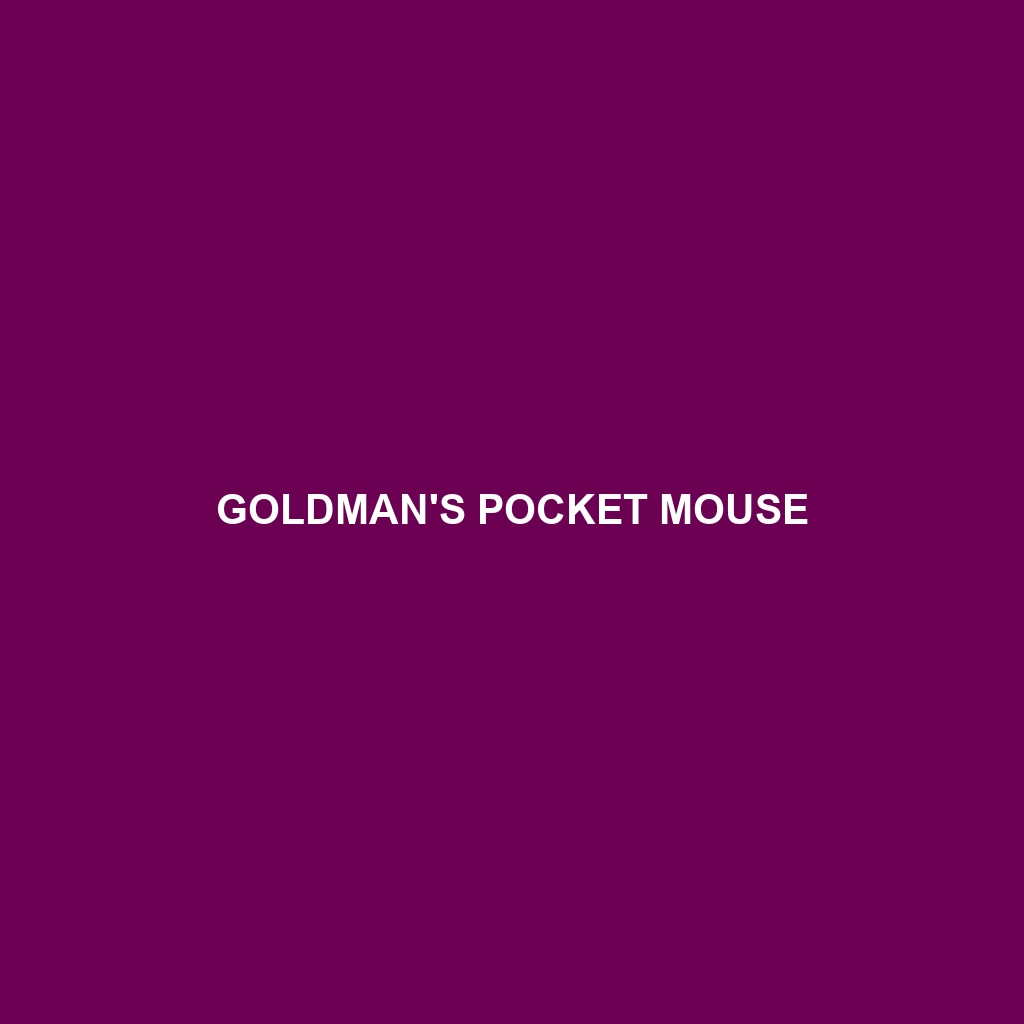Goldman’s Pocket Mouse: A Comprehensive Overview
Common Name: Goldman’s Pocket Mouse
Scientific Name: Chaetodipus goldmani
Habitat
Goldman’s Pocket Mouse is primarily found in the arid regions of western Mexico, particularly in the states of Jalisco and Nayarit. This species thrives in dry grasslands and scrubby areas, favoring environments with sandy soils that allow for easy burrowing. Its presence is often associated with sparse vegetation and rocky outcrops, which provide both shelter and foraging opportunities.
Physical Characteristics
This small rodent typically measures approximately 7.5 to 10.5 centimeters in body length, with a tail that can add an additional 9 to 12 centimeters. The Goldman’s Pocket Mouse is characterized by its soft, sandy-brown fur, which provides excellent camouflage against the desert landscape. Notable features include its large, rounded ears and prominent cheek pouches, which are used for storing food. Its long tail is also tufted, aiding in balance and navigation across its habitat.
Behavior
Goldman’s Pocket Mouse exhibits primarily nocturnal behavior, becoming active during the cooler night hours to avoid the heat of the day. They are known for their remarkable burrowing abilities, often creating extensive tunnel systems that provide shelter from predators and harsh environmental conditions. Socially, these mice are typically solitary, though they may congregate during breeding seasons or when food is abundant.
Diet
The diet of Goldman’s Pocket Mouse consists mainly of seeds, grains, and various insects. Their foraging habits involve scrounging through the ground litter for edible materials, reflecting their adaptation to the arid environment. This rodent also relies on its cheek pouches to transport food back to its burrow, ensuring a steady supply for times of scarcity.
Reproduction
Goldman’s Pocket Mouse reproduces seasonally, typically breeding in the warmer months from April to August. The female usually gives birth to a litter of 2 to 6 offspring, which are altricial at birth, meaning they are born hairless and helpless. Parental care is primarily undertaken by the female, who nurtures and weans her young until they are capable of independent survival.
Conservation Status
The current conservation status of Goldman’s Pocket Mouse is classified as vulnerable by the IUCN Red List due to habitat loss and degradation. Preservation of its natural habitat is essential for ensuring the survival of this species, as urban expansion and agricultural practices threaten its environment.
Interesting Facts
- Goldman’s Pocket Mouse has a unique ability to store large amounts of food in its cheek pouches, enabling it to survive in harsh conditions.
- Despite its small size, this mouse plays a significant role in seed dispersion, contributing to the health of its ecosystem.
Role in Ecosystem
Goldman’s Pocket Mouse serves an important role in its ecosystem as both a seed disperser and a prey species for various predators, including birds of prey and snakes. Its burrowing habits also contribute to soil aeration, promoting healthy plant growth in its habitat. By participating in the food web, Goldman’s Pocket Mouse helps maintain the ecological balance within its environment.
